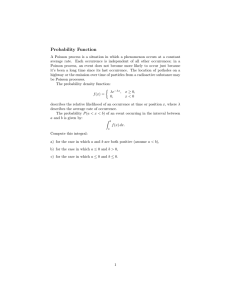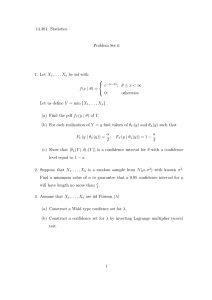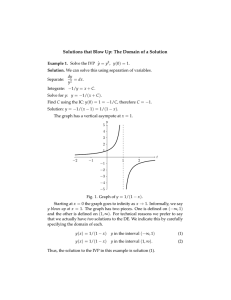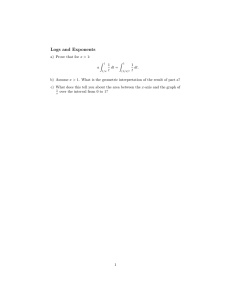Probability Function
advertisement
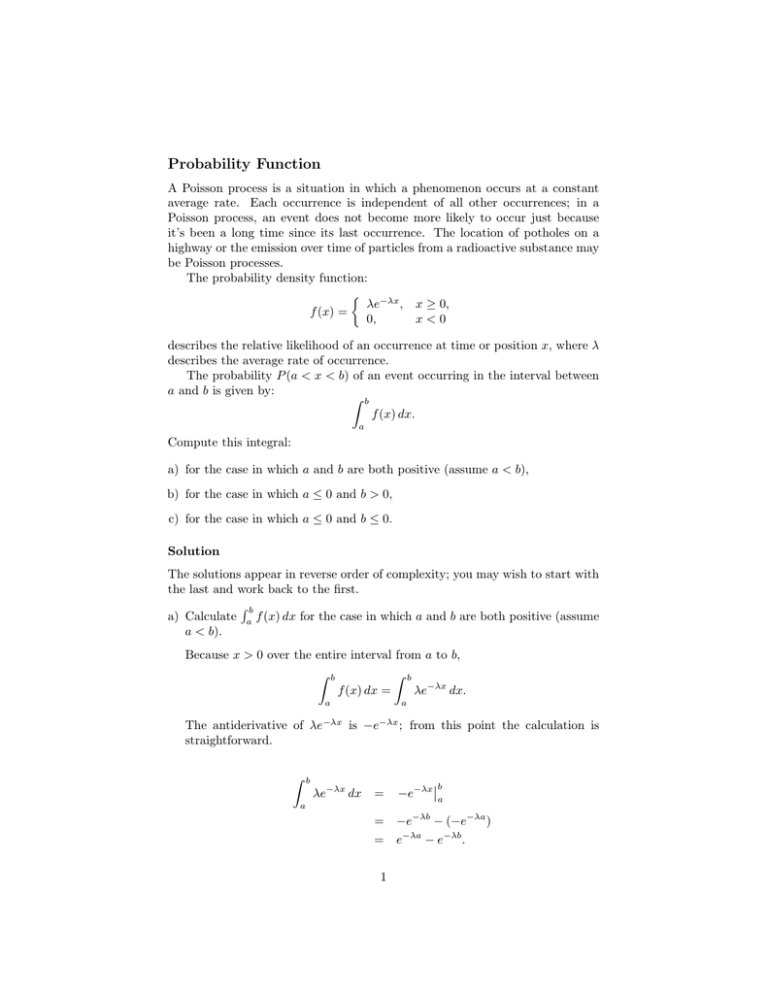
Probability Function A Poisson process is a situation in which a phenomenon occurs at a constant average rate. Each occurrence is independent of all other occurrences; in a Poisson process, an event does not become more likely to occur just because it’s been a long time since its last occurrence. The location of potholes on a highway or the emission over time of particles from a radioactive substance may be Poisson processes. The probability density function: � λe−λx , x ≥ 0, f (x) = 0, x<0 describes the relative likelihood of an occurrence at time or position x, where λ describes the average rate of occurrence. The probability P (a < x < b) of an event occurring in the interval between a and b is given by: � b f (x) dx. a Compute this integral: a) for the case in which a and b are both positive (assume a < b), b) for the case in which a ≤ 0 and b > 0, c) for the case in which a ≤ 0 and b ≤ 0. Solution The solutions appear in reverse order of complexity; you may wish to start with the last and work back to the first. �b a) Calculate a f (x) dx for the case in which a and b are both positive (assume a < b). Because x > 0 over the entire interval from a to b, � b � b f (x) dx = λe−λx dx. a a The antiderivative of λe−λx is −e−λx ; from this point the calculation is straightforward. � b λe−λx dx = a �b −e−λx �a = −e−λb − (−e−λa ) = e−λa − e−λb . 1 Given a Poisson distribution with rate parameter λ and b ≥ a > 0, the probability of an event occurring in the interval [a, b] is e−λa − e−λb . b) Calculate �b a f (x) dx for the case in which a ≤ 0 and b > 0. We haven’t done many examples of integration of piecewise defined func­ tions, but we can use the geometric interpretation of the definite integral to determine what we must do. On the interval [a, 0], f (x) = 0 so the area under that part of the graph of f (x) is 0. On the interval [b, 0], f (x) = λe−λx . The area under the graph of f (x) between a and b must be: � b 0 � f (x) dx = a � a f (x) dx 0 � = b f (x) dx + 0+ b λe−λx dx 0 c) Calculate �b a = �b −e−λx �0 = = −e−λb − (−e−λ·0 ) 1 − e−λb . f (x) dx for the case in which a ≤ 0 and b ≤ 0. This calculation is trivial. On the interval [a, b], f (x) = 0. The area between the graph of f and the x-axis is 0, so: � b f (x) dx = 0 a 2 when a, b ≤ 0. MIT OpenCourseWare http://ocw.mit.edu 18.01SC Single Variable Calculus�� Fall 2010 �� For information about citing these materials or our Terms of Use, visit: http://ocw.mit.edu/terms.
